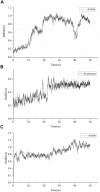Network pharmacology and computer-aided drug design to explored potential targets of Lianhua Qingwen and Qingfei Paidu decoction for COVID-19
- PMID: 36210820
- PMCID: PMC9540507
- DOI: 10.3389/fphar.2022.1013428
Network pharmacology and computer-aided drug design to explored potential targets of Lianhua Qingwen and Qingfei Paidu decoction for COVID-19
Abstract
Coronavirus disease 2019 (COVID-19) caused by SARS-CoV-2, has spread globally, affecting people's lives worldwide and hindering global development. Traditional Chinese Medicine (TCM) plays a unique role in preventing and treating COVID-19. Representative prescriptions for the COVID-19 treatment, Lianhua Qingwen (LHQW) and Qingfei Paidu Decoction (QFPD), effectively alleviate COVID-19 symptoms, delaying its progression and preventing its occurrence. Despite the extensive similarity in their therapeutic effects, the mechanisms and advantages of LHQW and QFPD in in treating mild-to-moderate COVID-19 remain elusive. To characterize the mechanisms of LHQW and QFPD in treating COVID-19, we used integrated network pharmacology and system biology to compare the LHQW and QFPD components, active compounds and their targets in Homo sapiens. LHQW and QFPD comprise 196 and 310 active compounds, some of which have identical targets. These targets are enriched in pathways associated with inflammation, immunity, apoptosis, oxidative stress, etc. However, the two TCM formulas also have specific active compounds and targets. In LHQW, arctiin, corymbosin, and aloe-emodin target neurological disease-related genes (GRM1 and GRM5), whereas in QFPD, isofucosterol, baicalein, nobiletin, oroxylin A, epiberberine, and piperlonguminine target immunity- and inflammation-related genes (mTOR and PLA2G4A). Our findings indicate that LHQW may be suitable for treating mild-to-moderate COVID-19 with nervous system symptoms. Moreover, QFPD may effectively regulate oxidative stress damage and inflammatory symptoms induced by SARS-CoV-2. These findings may provide references for the clinical application of LHQW and QFPD.
Keywords: COVID-19; GRM1/5; arctiin; systems biology; traditional Chinese medicine; β-carotene.
Copyright © 2022 Li, Wang, Guo, Li, Song and Li.
Conflict of interest statement
The authors declare that the research was conducted in the absence of any commercial or financial relationships that could be construed as a potential conflict of interest.
Figures







References
LinkOut - more resources
Full Text Sources
Miscellaneous

